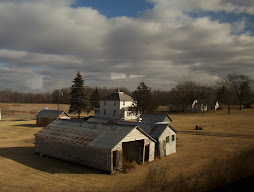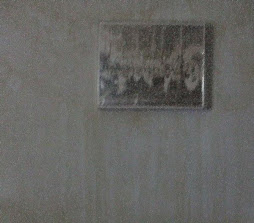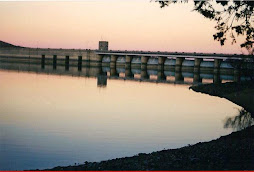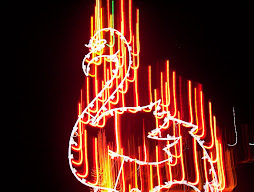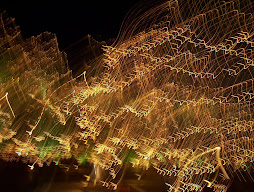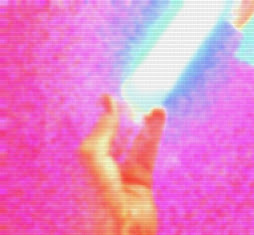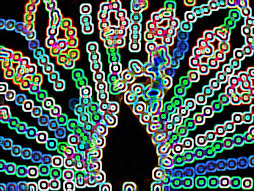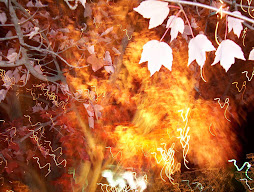skip to main |
skip to sidebar
Large aftershock hits northern Japan Excerpts:
The aftershock highlighted the vulnerability of Japan’s nuclear plants to further tremors. While Tokyo Electric Power Company (TEPCO) reported no change in the state of its crippled reactors at the Fukushima Daiichi plant, other nuclear facilities in northern Japan suffered power losses and were compelled to rely on emergency diesel generators.
..
Yesterday evening more than 450,000 households were still without power. The region’s nuclear plants were already offline, and the available electricity supply fell further after five conventional power plants automatically shut down when the aftershock occurred. The outages were compounded by damage to the power grid. Fires and gas leaks were reported in Sendai and other areas of Miyagi and Iwate prefectures.
TEPCO’s statement (Following the aftershock) simply means that it has observed no change to what the International Atomic Energy Agency (IAEA) continues to describe as a “very serious” situation. The TEPCO comment is doubly deceptive because the means for observing changes—the instrumentation that normally monitors the reactors—has been compromised by the impact of the March 11 earthquake and tsunami.
And:
Conditions at the Fukushima plant are anything but normal. The conventional cooling systems of three of the six nuclear reactors—units 1, 2 and 3—were put out of action on March 11, resulting in the heating up of the reactor cores. A meltdown was only prevented by continuously pumping salt water, subsequently replaced by fresh water, into the reactors. Hydrogen explosions have badly damaged the reactor buildings of units 1 and 3 as well as unit 4, where the reactor core had been placed in the spent fuel rod pool to allow for reactor maintenance.
At this stage, the extent of the damage to the reactor cores can only be estimated, as no direct observation is possible. Nor is the state of the reactor cooling systems known, as deposits of salt are likely to be impeding water circulation. The danger of further hydrogen explosions was underscored by TEPCO’s decision this week to start pumping inert nitrogen into unit 2 to flush out hydrogen and oxygen from the primary containment vessel.
And:
Thursday’s tremor and associated power blackouts impacted on three other nuclear facilities in northern Japan. A fuel reprocessing plant at Rokkasho and a power plant at Higashidori, both in the Aomori Prefecture, were temporarily cut off from the electricity grid and had to rely on backup emergency diesel generators.
Radioactive ocean water sparks worry From Asia One. Excerpts:
Beijing on Friday expressed its concern over Japan's massive dumping of radioactive water into the Pacific Ocean from a quake-crippled nuclear plant.
"Being Japan's neighbour, it is natural for us to express concern about this," Foreign Ministry spokesman Hong Lei said in a statement. "We hope the Japanese side acts in accordance with relevant international laws and takes effective measures to protect the ocean environment."
He noted that Japan has informed the Chinese side about its moves and China is closely following developments.
"At the same time, we are conducting a professional assessment and will continue to keep contact with the Japanese. We require Japan to report comprehensive and accurate information in a timely fashion," Hong said.
I'm sure he's serious.
From Safe Distance, U.S.-Japanese Team Draws Up Plan to Demolish Reactors
Hydrogen explosions. High levels of radiation. Thousands of gallons of contaminated water dumped into the sea. With the drumbeat of bad news, including another powerful aftershock on Thursday, it will take months, if not years, to stabilize the reactors and spent fuel pools that were damaged in last month’s earthquake and tsunami at the Fukushima Daiichi plant.
Yet it is not too soon for a team of engineers from Japan and the United States to begin working on the thorny task of how to dismantle the reactors, four of which are so badly damaged that the plant’s operator has said they will be scrapped.
Already, dozens of engineers from Toshiba, which helped build four of the Fukushima Daiichi reactors, have been joined by experts from the United States to prepare for the decommissioning work, a job so big that the planning needs to start even now, in parallel with the efforts to contain the crisis.
IAEA chief says Japan's crisis extremely serious
The International Atomic Energy Agency chief says he views Japan's nuclear crisis as an extremely serious accident requiring international cooperation.
Thursday's quake damages Onagawa nuclear plant Understand, this is ANOTHER nuclear power plant. From NHK. Plus video.
Tohoku Electric Power Company says Thursday night's strong earthquake caused water to overflow from spent fuel storage pools at one of its nuclear power plants.
The power company reported on Friday that water had spilled onto the floor at all 3 reactors at the Onagawa nuclear power plant in Miyagi Prefecture. The amount of water spilled was 3.8 liters at the most.
Why isn't TEPCO doing simultaneous damage assessment? Why aren't they beginning to construct some contingency containment structures and systems? I know you don't do this overnight, but if the already-damaged containment structures go, Doom will most assuredly prevail.
Inside report from Fukushima nuclear reactor evacuation zone Video from Journalist Tetsuo Jimbo driving, then walking towards Fukushima. A sad and creepy trip into the recently created Zone of Ghosts, where the few people that remained were leaving, and the only ones left behind were the animals.
Water radiation levels rise north of nuke plant From NHK, via Rense. Excepts:
The operator of the troubled Fukushima Daiichi nuclear power plant says seawater radiation levels continue to rise in areas north of the plant.
Tokyo Electric Power Company says it detected on Thursday 110 becquerels of radioactive iodine-131 per cubic centimeter in seawater samples collected 30 meters from outlets in the northern part of the complex.
The figure is 2,800 times higher than the maximum allowed under government standards. Measurements at the same spot were 600 times the standard on Tuesday and 1,000 times on Wednesday.
From The Daily Mail. Excerpts:
Earth has found a new companion that has joined its orbit around the sun, scientists have revealed.
It may not have the most romantic of names, but Asteroid 2010 SO16 could pursue Earth for anywhere between the next 120,000 to a million years.
And at a few hundred metres across, it is the largest space rock ever discovered so close to earth.
A huge, powerful star explosion detonated in deep space last week — an ultra-bright conflagration that has astronomers scratching their heads over exactly how it happened.
The explosion may be the death cry of a star as it was ripped apart by a black hole, scientists said. High-energy radiation continues to brighten and fade from the March 28 blast's location, about 3.8 billion light-years from Earth in the constellation Draco.
Astronomers say they've never witnessed an explosion so bright, long-lasting and variable before, according to NASA officials.
The explosion looks like a gamma-ray burst — the most powerful type of explosion in the universe, which usually mark the destruction of a massive star — but the flaring emissions from these dramatic events never last more than a few hours, researchers said.
"We know of objects in our own galaxy that can produce repeated bursts, but they are thousands to millions of times less powerful than the bursts we are seeing now," said Andrew Fruchter, of the Space Telescope Science Institute in Baltimore, in a statement today (April 7). "This is truly extraordinary."
And:
"The fact that the explosion occurred in the center of a galaxy tells us it is most likely associated with a massive black hole," said Neil Gehrels, the lead scientist for Swift at NASA's Goddard Space Flight Center, in a statement. "This solves a key question about the mysterious event."
Also:
Astronomers have detected stars disrupted by supermassive black holes before, but none have shown the X-ray brightness and variability seen in GRB 110328A, which has flared repeatedly. Since April 3, for example, it has brightened by more than five times.
70 percent of fuel rods in reactor core at Fukushima nuke plant damaged Found this on Godlike Productions. Excerpts:
About 70 percent of the 400 fuel rods (Approximately 280 fuel rods. Why not say that?) in the No. 1 reactor at the crippled Fukushima No. 1 Nuclear Power Plant are damaged, Tokyo Electric Power Co. (TEPCO) has revealed.
In addition, some 30 percent of the 548 fuel rods (Approximately 165..) in the No. 2 reactor core and 25 percent of those in the No. 3 reactor core (Unknown variable, eh?) are also thought to be damaged, the power company stated on April 6. The figures are based on analysis of radiation data collected from the side of the reactor pressure vessel between the March 11 earthquake and tsunami and March 15.
Big aftershock rattles Japan disaster zone Excerpts:
A powerful aftershock rocked Japan's tsunami disaster zone, killing at least three and triggering new concerns over nuclear power plants in a region still grappling with an atomic emergency.
Electricity was cut across a huge area of northern Japan, forcing cooling systems at three nuclear plants to switch to emergency power and plunging more than 3.3 million households into darkness late Thursday night.
At least one back-up supply remained online at all three plants, but the aftershock highlighted the potential risks of nuclear generation in an earthquake zone amid a battle to stabilise reactors at tsunami-hit Fukushima.
Massive pumps departing U.S. for Japan nuclear plant Excerpts:
Two of the world's largest concrete pumps will depart the United States later this week as part of the effort to resolve the crisis at Japan's Fukushima Daiichi nuclear power plant, officials said.
Each pump weighs 190,000 pounds and has a boom reach of over 227 feet, and can pump water and concrete at massive rates. They will be loaded aboard enormous Russian cargo jets Friday.
The pumps' manufacturer, Putzmeister, said in a release the devices are normally used to pour concrete for bridges and high-rise construction projects, but can offer pinpoint accuracy "to directly target hotspots within the reactors" and help with cooling.
There are only three such pumps in the world, said Putzmeister spokeswoman Mary Roberts.
Water leaks found at Onagawa nuke plant after Thursday quake
Water leaks were found Friday at Onagawa nuke plant in Miyagi prefecture after the quake measuring 7.4 on Richter scale shook Japan's northeast Thursday night, Kyodo News quoted the plant's operator as saying.
The report didn't say where the water came from or whether it contains radioactivity.
Onagawa was the nearest nuclear power plant from the focus of the March 11 earthquake and the aftershock on Thursday.
State of Japan's stricken nuclear reactors From Terra Daily. Excerpts:
To stop a catastrophe, crews have pumped thousands of tonnes of water into the reactors and pools, urgent work now creating a massive amount of radioactive water and sparking a fresh fear of contamination in the Pacific Ocean.
Emergency workers have found turbine buildings and trench tunnels outside submerged in highly radioactive water, also discovering water leaking from a cracked pit into the ocean.
In order to find safe storage space for the most radioactive water -- so dangerous that it is halting crucial repair work -- operator TEPCO has been forced to empty containers with lower-level radioactive water into the ocean.
The Tokyo Electric Power Company has released 11,500 tonnes, or more than four Olympic pools-worth, into the sea, despite protests from local fishermen.
Fishermen: Utility's actions in Japan nuclear crisis 'unforgivable'
Japanese fishermen have taken the offensive in their fight against the owner of the stricken Fukushima Daiichi power plant, angrily calling the utility's actions insulting, incompetent and "unforgivable" over the course of the weeks-long nuclear crisis.
The National Fishery Corporative Joint Association, a trade group for Japan's fishing industry, issued a scathing statement Wednesday just hours after its members met with officials from the Tokyo Electric Power Company, which runs the crippled plant.
In it, the group demanded that the utility and the Japanese government "compensate all parties (that have) indirectly or directly suffered" as a result of the situation.
"Tokyo Electric has not been capable of understanding the damage at the plant and (contaminated) water. That led to this serious situation," the group said in the statement.
"Tokyo Electric and the government (share) responsibility for this situation. It is unforgivable," the message continues. "All those who are living and sustaining their lives on the sea are feeling strong rage against (the utility and the government's) irresponsible behavior."
Grab Your Chopsticks and Geiger Counters Wall Street Journal. Excerpts:
At Gyotaku, a Japanese restaurant in Hong Kong, business is bad and money is tight. But that didn’t stop owner John Liang from splurging on a new tool last week: a Geiger counter, for 10,000 Hong Kong dollars (about US$1,300).
Since the March 11 earthquake and tsunami set off Japan’s nuclear crisis, many diners in Hong Kong have steered clear of sushi restaurants for fear of radiation poisoning from food, particularly fish, that’s come from Japan. As business spirals down, some Hong Kong eateries have chosen to stay the course and use fish from Japan. But others have switched to suppliers from other countries — or turned creative.
Hence Mr. Liang’s hand-held radiation-reading device. It will be available next week for customers who want extra assurance. “They can point the gun at their meal and get a reading before taking a bite,” says Mr. Liang.
But actually Mr. Liang has also eliminated Japanese food from his kitchen, switching to fish from Spain, Brazil, Australia, Canada and Taiwan. Even the pork at Gyotaku, once sourced from Japan, now comes from Spain and Australia.
Two 74 Japan Earthquakes April 7 2011 with a strange blue flash Tsunami warning Video courtesy of Godlike Productions. Some confusion exists: Were there one, or two aftershocks? Urban Survival's screen grab of the USGS site shows two, but now their site shows one. This should be cleared up(or scrubbed) shortly..
Another strong quake rattles tsunami-ravaged Japan (UPDATED 11:05 a.m.)
A magnitude-7.4 aftershock rattled Japan on Thursday night, knocking out power across a large swath of the northern part of the country nearly a month after the devastating earthquake and tsunami that flattened the northeastern coast.
..
The operator of the tsunami-ravaged Fukushima Dai-ichi nuclear plant said there was no immediate sign of new problems caused by the aftershock, and Japan's nuclear safety agency says workers there retreated to a quake-resistant shelter (not "quake-proof")in the complex. None were injured. The crisis there started when the tsunami knocked out cooling systems. Workers have not been able to restore them.
Thursday's quake knocked out several power lines at the Onagawa nuclear power plant north of Sendai, which has been shut down since the tsunami. One remaining line was supplying power to the plant and radiation monitoring devices detected no abnormalities. The plant's spent fuel pools briefly lost cooling capacity but an emergency diesel generator quickly kicked in.
South Korea schools shut over radioactive rain From The Herald Sun via Godlike Productions. Excerpts:
DOZENS of South Korean schools have cancelled classes as officials scrambled to quell fears that rain contained radioactive material from Japan's stricken nuclear plant.
More than 130 primary schools and kindergartens in Gyeonggi province surrounding the capital Seoul cancelled or cut classes today after rain began falling on orders from the provincial education office.
..
Concern grew in the nation closest to Japan after the weather agency said on Monday that radioactive material from the crippled Fukushima nuclear plant may be carried to the peninsula by south-easterly winds.
The amount of radioactive material contained in the rainfall is too tiny to pose any health threat, (Officials keep saying that..) the prime minister's office said today, calling for education offices to refrain from "making parents nervous".
With good reason, the Koreans are nervous.
Closing Ranks: The NRC, the Nuclear Industry, and TEPCo. Are Limiting the Flow of Information Latest video from Arnie Gundersen. Definitely worth the watch.
Japan injects nitrogen into nuke reactor to prevent blast Excerpts:
TOKYO - Tokyo Electric Power Co (TEPCO) began pumping nitrogen gas into a stricken reactor at the troubled Fukushima Daiichi nuclear power plant on Thursday to prevent the risk of a hydrogen explosion.
Workers injected nitrogen gas into the containment vessel of the plant's No 1 reactor in process that could take several days, according to the embattled utility firm.
..
"Under these conditions, if we continue cooling the reactors with water, the hydrogen leaking from the reactor vessel to the containment vessel could accumulate and could reach a point where it could explode," a TEPCO official was quoted as saying Thursday.
In Wake Of Nuclear Crisis, TEPCO's Plans Questioned Excerpts:
More than three weeks after an earthquake and tsunami set off one of the world's most serious nuclear accidents, at Japan's Fukushima Dai-ichi plant, experts are intensifying their scrutiny of how the plant operator, Tokyo Electric Power Co., has handled the crisis.
Some events TEPCO couldn't have foreseen — such as the massive size of the tsunami that swamped the coastal facility. But nuclear experts say that in the days following the initial series of explosions and fires inside the reactors, which caused fuel rods to melt and subsequent large releases of radiation, TEPCO made very costly — and avoidable — mistakes.
The company, they say, was ultimately surprised and overwhelmed by the chaos created by the tsunami. And its poor coordination of the response may have helped prolong the crisis.
"We're three weeks into this and this thing should be more under control than it is," said Matthew Bunn, a professor and the co-principal investigator of the Managing the Atom Project at Harvard University's Belfer Center for Science and International Affairs. "It seems that everyone at TEPCO is running around as fast as they can, trying to do what they can, but it doesn't seem the tests and exercises of emergency plans were there that should have been there."
And:
"The flaw at Fukushima was that worst-case tsunami predictions were exceeded, and Japan's regulatory standards for backup cooling systems didn't enable the Dai-ichi plant to withstand the flooding," said Ritch. "The tragedy is that it was a preventable accident."
Japan Red Cross struggling to hand out record donations Excerpts:
The Japanese Red Cross has $1.6 billion in donations from the public in the month after Japan's devastating earthquake and tsunami, the most it has been given for any relief campaign, but the charity is struggling to get the cash to the neediest.
March 11's magnitude 9.0 earthquake and the giant tsunami and nuclear crisis that followed left more than 27,600 dead or missing, sent 163,000 people into shelters, and destroyed infrastructure in the north of the country.
This loss of organization is complicating the relief effort.
Facing Radiation Japan Races to Find the Dead From Time. Excerpts:
Japanese police raced Thursday to find thousands of missing bodies before they decompose along a stretch of tsunami-pummeled coast that has been largely off-limits because of a radiation-leaking nuclear plant.
Nearly a month after a 9.0-magnitude earthquake generated the tsunami along Japan's northeastern coast, more than 14,700 people are still missing. Many of those may have been washed out to sea and will never be found.
In the days just after the March 11 disaster, searchers gingerly picked through mountains of tangled debris, hoping to find survivors. Heavier machinery has since been called in, but unpredictable tides of radiation from the Fukushima Dai-ichi nuclear complex have slowed progress and often forced authorities to abandon the search, especially within a 12-mile (20-kilometer) evacuation zone around the plant.
Japan disaster exposes vulnerabilities of global supply chains Short answer: The public doesn't understand the size of current Global supply chains, and major impacts are sure to come. And no, they have not hit yet..:
The first of many indications our view of reality is about to.. Morph. What an amazing time: Scary as hell and exploding outward in every conceivable direction, good solidly mixed in with the bad. This.. Could be Good. Excerpts:
DATA from a major US atom smasher lab may have revealed a new elementary particle, or potentially a new force of nature.
But experts aren't ready to tell the rest of the world what it actually means just yet. They cautioned that more analysis was needed over the next several months to uncover the true nature of the discovery.
"There could be some new force beyond the force that we know," physicist Giovanni Punzi said.
"If it is confirmed, it could point to a whole new world of interactions," he told AFP.
While much remains a mystery, researchers agree that this is not the "God Particle", or the Higgs-boson, a hypothetical elementary particle which has long eluded physicists who believe it could explain why objects have mass.
And:
"My personal judgment is that this excitement is adding fuel to the fire for the next generation of results and discoveries that will be made at the LHC (in Europe) and elsewhere. (Nigel Lockyer, director of Canada's national laboratory for particle and nuclear physics, TRIUMF.)
"We are so close to learning something profound."
Radiation-shielding sheets to be installed in Sept. at earliest
A plan to cover damaged reactor buildings at the crisis-hit Fukushima nuclear plant with special sheets to halt radiation leakage cannot offer a quick remedy, as the sheeting will be installed in September at the earliest due to high-level radioactivity hampering work at the site, government sources said Tuesday.
The government had asked Tokyo Electric Power Co., operator of the Fukushima Daiichi power station crippled by the March 11 quake and tsunami, to study the installment of radiation-shielding sheets, and a major construction firm commissioned to examine the idea said the construction will not start until June, the sources told Kyodo News.
June is the best Privatized Disaster Response can do.
U.S. Sees Array of New Threats at Japan’s Nuclear Plant Ugh.. From The New York Times Excerpts:
United States government engineers sent to help with the crisis in Japan are warning that the troubled nuclear plant there is facing a wide array of fresh threats that could persist indefinitely, and that in some cases are expected to increase as a result of the very measures being taken to keep the plant stable, according to a confidential assessment prepared by the Nuclear Regulatory Commission.
Among the new threats that were cited in the assessment, dated March 26, are the mounting stresses placed on the containment structures as they fill with radioactive cooling water, making them more vulnerable to rupture in one of the aftershocks rattling the site after the earthquake and tsunami of March 11. The document also cites the possibility of explosions inside the containment structures due to the release of hydrogen and oxygen from seawater pumped into the reactors, and offers new details on how semimolten fuel rods and salt buildup are impeding the flow of fresh water meant to cool the nuclear cores.
In recent days, workers have grappled with several side effects of the emergency measures taken to keep nuclear fuel at the plant from overheating, including leaks of radioactive water at the site and radiation burns to workers who step into the water. The assessment, as well as interviews with officials familiar with it, points to a new panoply of complex challenges that water creates for the safety of workers and the recovery and long-term stability of the reactors.
And:
David A. Lochbaum, a nuclear engineer who worked on the kinds of General Electric reactors used in Japan and now directs the nuclear safety project at the Union of Concerned Scientists, said that the welter of problems revealed in the document at three separate reactors made a successful outcome even more uncertain.
“I thought they were, not out of the woods, but at least at the edge of the woods,” said Mr. Lochbaum, who was not involved in preparing the document. “This paints a very different picture, and suggests that things are a lot worse. They could still have more damage in a big way if some of these things don’t work out for them.”
Japan earthquake and tsunami: list of impacts of disaster
The government has estimated damage from the earthquake and tsunami at 16-25 trillion yen. The top estimate would make it the world's costliest natural disaster.
The estimate covers damage to roads, homes, factories and other infrastructure, but excludes lost economic activity from power outages and costs arising from damage to the Fukushima nuclear power plant, as well as the impact of swings in financial markets and business sentiment. The yen initially spiked to a record high against the dollar after the quake, prompting the first joint intervention by the Group of Seven rich nations in 11 years to help shield Japan's export-reliant economy.
Japan: TEPCO dumps radioactive water in sea
Concerns about the levels of contamination from the crippled Fukushima Daiichi complex mounted yesterday after the Tokyo Electric Power Company (TEPCO) announced that, with the Japanese government’s approval, it was pumping 11,500 metric tonnes of “low-level” contaminated water into the ocean from the plant.
In their latest ad hoc response to the ongoing disaster, TEPCO and the government stated that the action was essential to clear space for the storage of more highly contaminated water. Chief Cabinet Secretary Yukio Edano told a media briefing in Tokyo on Monday: “There was no choice but to take this step to prevent highly radioactive water from spreading into the sea. The fact that radioactive water is being deliberately dumped into the sea is very regrettable, and one we are very sorry about.”
And:
TEPCO is undertaking two releases. The first involves 10,000 tonnes of water that had flooded a radioactive waste processing facility, which TEPCO intends to use as storage for the highly radioactive water that has pooled in parts of the reactor complex. The waste facility is not designed to hold water, but it is reportedly not leaking, so the company decided to empty it in order to pump in the more-radioactive water.
The second release is of 1,500 tonnes of water that has been collecting in drainage pits around reactors Nos. 5-6. Authorities are concerned that the water may eventually flood the rooms holding the recirculating pumps that have prevented those two units from dangerously overheating.
Japan stems uncontrolled leak from nuclear plant Excerpts:
Workers at Japan's crippled atomic power plant on Wednesday plugged a hole spewing highly radioactive water into the ocean, boosting efforts to contain the world's worst nuclear disaster since Chernobyl.
But in an illustration of how fragile progress is at the Fukushima plant, operator Tokyo Electric Power said it was concerned a build-up of hydrogen gas at a different reactor could cause another explosion at the site.
Crisis Saddles Village With Unwanted Notoriety
Iitate (pronounced EE-tah-tay) has felt itself under siege since the damaged Fukushima Daiichi Nuclear Power Station showered the village with far higher levels of radiation than neighboring communities. Although Iitate’s inland location helped it escape the earthquake and tsunami with little damage, villagers blame an unfortunate combination of winds and the shapes of the mountains for channeling radioactive fallout from the plant, 25 miles to the southeast.
According to the village’s own measurements, the amount of airborne radiation was 6.75 microsieverts on Sunday, down from the levels of more than 10 two weeks ago, but still more than 100 times normal radiation levels, the village said. The Japanese government says that is not high enough to pose a health risk. But on Monday a Japanese university team advised all pregnant women and young children to leave the village.
Why is Japan dumping radioactive water into the ocean? Found it on Rense.. Scary excerpt:
While pumping water out of the damaged reactor could help solve solve the problem, workers continue to try to identify the source of the leak. They have tried dumping a milky dye into the suspect pool to see if they can trace the water’s path. So far, that has not shown up in nearby ocean waters.
Japan seeks Russian help to end nuclear crisis Reuters, via Rense. Excerpts:
Japan has asked nuclear superpower Russia to send a special radiation treatment ship used to decommission nuclear submarines as it fights to contain the world's worst atomic crisis since Chernobyl, Japanese media said late on Monday.
Japanese Market Ends In Negative Territory On Nuke Concerns; TEPCO Plunges Excerpts:
The Japanese market ended Tuesday's trading session in the negative territory with moderate losses, on nuclear concerns after Tokyo Electric Power Co. or TEPCO has, as an emergency measure, dumped low-level radioactive water from its unstable nuclear power plant at Fukushima into the Pacific Ocean. Fresh concerns about the ill effect on fishery products by the low-level radioactive water negatively dented the traders' sentiment.
..
Shares of Tokyo Electric Power plunged 17.91 percent on huge volumes. Among other major losers, Yokogawa Electric declined 2.69 percent, and Yaskawa Electric lost 2.30 percent.
Fukushima marks a 'nuclear ice age' From The Asia Times. Excerpts:
Japan is experiencing a big irony of history. The only country in the world that has suffered from atomic bombs is now fighting a nuclear disaster caused by nature. The situation at the nuclear plant remains precarious, as plant engineers, Self-Defense Forces (SDF) members, firefighters and the police continue desperate efforts to cool down the overheating reactors and spent fuel.
Even if the country gets the plant under control, an emotional public will be wary of nuclear power forever.
..
Japanese people were already extremely sensitive about anything nuclear as the only country in human history to have ever been attacked with nuclear weapons. Older generations especially have a "nuclear allergy" over the atomic bombing of Hiroshima and Nagasaki. Their memories of the "A-bombs" are still raw.
Despite this resentment towards nuclear technology, Japan was forced to expand nuclear power generation after the two oil shocks in the 1970s, which exposed Japan's heavy reliance on the Middle East for energy resources.
Should rural towns in Japan be rebuilt? Excerpts:
..Like many rural communities in the USA, Rikuzentakata and countless towns and villages along Japan's ravaged coastline were home to largely elderly populations, left behind by younger people who moved inland and to the south for better jobs than the fishing and agricultural work this area could offer.
Now, the question of how — or whether — to rebuild such rural communities hangs over reconstruction efforts.
Aggreko powers up emergency supplies to Japan
British power firm Aggreko has signed a deal to help supply Japanese consumers and industry following the devastating earthquake and tsunami last month.
The company has already begun sending equipment to set up power plants in the Tokyo Bay area.
Under the minimum one-year contract with Tokyo Electric Power Company Incorporated (Tepco) – the operator of the damaged Fukushima nuclear plant - Aggreko will supply 200 megawatts of emergency power starting in June.
Another quandary in Japan: How should debris be handled?
In the best of times, one man's trash is another man's treasure. But in the wake of Japan's March 11 earthquake and tsunami, the nation is facing complex legal, financial, logistical, environmental and ethical questions over just how to deal with at least 80 million tons of debris -- from 300-ton ships and smashed cars to waterlogged heirlooms and soiled family photos.
The central government said today that it would foot the bill for the cleanup. The expense is only beginning to be tabulated, but it's expected to far exceed the $3.2 billion required to dispose of debris in Kobe after its 1995 earthquake.
Taken from George Ure's essential Urban Survival Site.
"If we're ever going to be a starfaring world, we need a university that will teach people a different way of being....that's what we want you to consider." A heady challenge if there was one, rebuilding higher ed with an avowed 'get off Earth bent', but that was the gauntlet thrown down by a prospective consulting client I spoke with this week. "Let me mull it around in a Peoplenomics report, because it's a big topic and I don't want to see your business plan details," I told the caller. As the week wore on, the topic came clearly into focus as one that humans could be working on, but because of our preoccupation with the ruling money paradigm, we aren't pursuing. Nor is it likely we're about to. The good news? Our old paradigms die, or we do...and that watershed event might be a good time to reinvent how humans purpose themselves and learn.
Now that we're knee-deep in about twelve different flavors of shit, it becomes obvious that we-as-global-society should have spent our time more constructively. Just two recent-history examples here: 1. One billion dollars towards Research and Development in 1975 for Solar, Water, and Wind would have completely changed our future direction(s). 2, Better than half-assed Nuclear Emergency Response plans from TEPCO, GE, The IAEA, anyone.. would have also been appreciated, as it might have kept the planet from a horrifying, irradiating catastrophe, you know, like the one unfolding now..
Now that it's down to the wire on so many societal fronts, it's cool to see at least some people are still capable of Forward Thinking, and taking some action regarding those thoughts and ideas. Focused thought toward future goals and timelines SHOULD be our first priority, although it never has, and will never be a majority opinion, without some paradigm smashing Event..
If.. IF we don't spectacularly off ourselves, we stand at the brink of a massive leap in human consciousness, effecting all aspects of this present form of reality. Implications from The Best Possible Choice are as spectacular as The Worst Case Scenario. The visible differences between the choices of directions we face become clearer, but the way forward, and our ultimate fate remain unseen and uncertain.
What's next ?
From AsiaOne. Excerpts:
Nuclear fallout may hit Taiwan on Wednesday evening at the earliest, after a small amount of radioactive iodine-131 was detected in the skies over Taiwan last week, said the country's nuclear energy authorities yesterday. The fallout will come straight from Japan's Fukushima, where a stricken nuclear power plant is steadily leaking radioactivity, but the impact on Taiwan will be "minimal," said the Executive Yuan's Atomic Energy Council (AEC) in a forecast.
Again, technically true, in the most immediate sense of the present-term, but not really too far into the future. Radiation is cumulative, and this isn't over.
It shouldn't be too long before Japan's neighbors begin to.. express their.. uneasiness/ irritation/ disdain.. when contamination continues to rain down, unabated.. How long is too long? No idea. Could be next week, May, no later than June, but there's a pretty good chance this will happen.
Continually unfolding situations will directly effect how quickly and how far Fukushima Event deteriorates before all radiation is contained. Days? Weeks? Months? Years? We won't know 'til we know..
Japan nuclear crisis: entire town nearest to stricken plant is moved to new 'temporary' quarters From The Telegraph UK via Rense. The first of many.. Excerpts:
Located in the shadow of the stricken Fukushima Daiichi nuclear plant inside the 20km exclusion zone, the town (Of Futuba) remains strictly out of bounds having been contaminated with dangerously high radiation levels.
Last week, its evacuated residents were all gathered together from their temporary shelter and moved, to what may be the closest place they can call home for some time: an abandoned high school in Kazo, Saitama prefecture, north of Tokyo.
..
What was at first seen as a temporary emergency evacuation while the nuclear power plants were brought under control is now becoming more permanent. Nobody has yet suggested it will be as bad as Chernobyl, where homes have stood untouched for 25 years this month since the world's worst nuclear accident. But on Friday, Japanese government officials said that residents would not be able to return home for "a long time".
Governor of Fukushima and Mayor of Town Near Nuclear Reactors Slam Government Response to Nuclear Crisis From Washington's Blog. Excerpts:
The governor of Fukushima slammed Japan's nuclear agency for failing to provide timely radiation data. As Japan Today notes:
Fukushima Gov Yuhei Sato expressed anger at the central government’s nuclear safety agency on Sunday for its late release of radioactivity data related to local farm produce, shipments of which have been partly restricted amid the ongoing nuclear crisis.
And:
And the mayor of Minami Soma - a city 25 kilometers from the stricken Fukushima nuclear complex - is appealing to the world community to help provide food and other essentials, as the Japanese government isn't doing much to help, other than telling people to stay indoors, and is providing insufficient information on the nuclear crisis. The mayor says that - since the government has told people to stay indoors - the stores supermarkets and banks are all closed, and people are "as if under starvation tactics". There is not enough gas, and so it is difficult to evacuate.
SNAPSHOT-Japan's nuclear crisis -Lots of Dashes acting like Bullet-Points indicating increasing doom..
Moody’s downgrades credit rating of Japan’s TEPCO due to nuclear crisis costs Excerpts:
Moody’s Investors Service has cut the long-term debt rating of the utility that operates Japan’s stricken nuclear power plant for the second time in two weeks amid expectations of massive compensation claims.
The ratings agency cited “significant financial obligations” faced by Tokyo Electric Power Co. from the tsunami-damaged Fukushima Dai-ichi plant that is leaking radiation. The credit rating was lowered three notches to “Baa1” from “A1” and remains under review for further downgrade.
..
“Depending on the magnitude of the damages and the extent to which TEPCO is found liable, TEPCO’s ability to meet these large and potentially growing obligations could be severely strained,” the agency said.
A report by investment bank Merrill Lynch estimated TEPCO faces compensation claims of 2.4 trillion to 3 trillion yen if it takes six month to regain control of the nuclear reactors. That could rise to 10 trillion yen ($120 billion) if it takes two years. Its lowest estimate was 1 trillion yen based on resolving the situation within two months.
And, BAM!:
TEPCO’s increasingly pessimistic outlook has triggered major worries among investors. The stock was down 10 percent Friday and has plunged 80 percent since March 11.
Asia stocks hit 3-year high Based almost exclusively on American financial data points and a weak Yen, so you know these gains will last Forever!
10 mil won't cut it, douchebags.. GE vows $10 mn aid, long-term help on Fukushima: Report
When it comes to nuclear energy, not everyone is Germany.. Example?
Nuclear crisis may go on for months. Excerpts:
Engineers pinned their hopes on chemicals, sawdust and shredded newspaper to stop highly radioactive water pouring into the ocean from Japan's tsunami-ravaged nuclear plant Sunday as officials said it will take several months to bring the crisis under control.
Concrete already failed to stop the tainted water spewing from a crack in a maintenance pit, and the new mixture did not appear to be working either, but engineers said they were not abandoning it.
..
The government said Sunday it will be several months before the radiation stops and permanent cooling systems are restored. Then there will be years of work ahead to clean up the area around the complex and figure out what to do with it.
Japan's Apocalypse. From Rense. Excerpts:
Despite a disaster multiples worse than Chernobyl, major media reports all along downplayed it. Now they largely ignore it, moving on to more important things like celebrity features and baseball's opening day, besides pretending American-led Libya bombing is well-intended when, in fact, it's another brazen power grab - an imperial war of conquest, explained in numerous previous articles.
The horror of all wars aside, waged solely for wealth and power, never humanity, Japan deserves regular top billing, given its global implications and potential millions of lives affected. Ignoring it is scandalous, yet it's practically disappeared from television where most people get news, unaware only managed reports are aired omitting vital truths.
Over three weeks and counting, Japan's crisis keeps worsens. Radiation levels in Fukushima's underground tunnel water reached 10,000 times above normal and rising. In nearby seawater, they're 4,385 times too high. Heavy rainfall exacerbates the problem. Food, water, air and soil contamination is spreading.
On March 31, New York Times writer Henry Fountain headlined, "Cleanup Questions as Radiation Spreads," saying:
At issue is "how to clean up areas that have been heavily contaminated by radioactivity," stopping short of suggesting they're dead zones that may affect all northern Japan, an area comparable to Pennsylvania, potentially making it uninhabitable.
Radioactive water found leaking into sea from pit at Japan nuclear plant Law of Unintended Consequences, anyone? From Reuters via Rense. Excerpts:
TOKYO — Authorities discovered highly radioactive water leaking from the crippled Fukushima Daiichi nuclear plant into the ocean Saturday, the latest sign that the desperate strategies being used to cool the overheating reactors could be creating new problems.
Canadian inspection agency refuses to test milk for radiation From The Vancouver Sun via Rense. Excerpts:
Canadian health agencies have no immediate plans to measure the amount of radiation in milk following Japan's nuclear crisis despite the demands of B.C. dairy farmers who want officials to follow the U.S. and test dairy products.
"There will be no testing of milk," Alice Danjou, a spokeswoman for the Canadian Food Inspection Agency, said Friday.
The news came as a disappointment to Robin Smith, executive director of the BC Milk Producers Association, which earlier this week called on the agency to test the milk in an effort to prove to the public the levels are low enough to consume.
Japan Nuclear Crisis N-Exec Death Threats 4/2/11 CNN video via Godlike Productions. File under: We get Death Threats..
“Very high levels of contamination” far away from Fukushima exclusion zone — More than double amount Soviets set for “relocation” at Chernobyl.










































